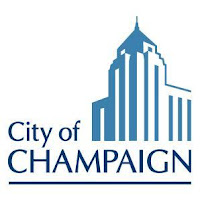Some local news coverage and information covers or compares both cities, like the coordinated preparations for "Unofficial St. Patrick's Day," a University tradition that used to cause a lot of chaos and tragedy. This post covers the latest "Unofficial" preparation, but also some information comparing property taxes, state grants, and marijuana legalization.
Unofficial Preparations:
WCIA had a handy breakdown of the various rules and maps where some of the limitations are going into effect here. From the introduction of that article:
Champaign and Urbana’s mayors have issued emergency orders with rules and regulations surrounding “Unofficial St. Patrick’s Day.”That full article and information here with a short video segment as well. WAND's article on the same also had a link to the Urbana Mayor's emergency order in PDF form here. The Daily Illini coverage highlighted the similarities with Champaign's order:
In a release, Urbana Mayor Diane Marlin said “Unofficial St. Patrick’s Day” is “an unsanctioned, alcoholic beverage drinking event that has occurred in the Champaign-Urbana area annually within two or three weeks of St. Patrick’s Day since 1996.” This year, the event is planned for Friday, March 6.
Champaign Mayor Deborah Frank Feien also issued an emergency order on Friday, placing restrictions on alcohol sales on March 6 to March 7 for all businesses holding a bar or restaurant liquor license.More on that here.
Similar to the Urbana mayor, Feien stated that Unofficial may be “a threat to public health, safety and welfare” and gave almost the same reasons for the order, such as the promotional efforts that go into the event and the increase in arrests.
C-U Property Taxes, State Grants, and Marijuana Dispensaries:
There's a long history behind why the property taxes of the two cities have varied over the years and how they developed with different stimulus and factors. Excerpt from Tom's Mailbag a couple months back trying to explain how Urbana's property taxes ended up slightly higher:
It’s mostly a function of luck and development patterns, some of which go back more than 150 years.That full Q & A is available from Tom's Mailbag here.
First was the decision of the Illinois Central Railroad to locate its main north-south line in West Urbana (as it was known then) rather than the county seat in Urbana. Soon Champaign was larger than Urbana and had a much bigger and more prosperous downtown with a greater number of department stores, hotels and theaters.
The disparity persisted and grew in the 1950s and ‘60s when it was decided to locate Interstate 57 west of Champaign rather than east of Urbana. Look at a map of Interstate 57 and see how the roadway drifts westward south of Paxton instead of going directly south. The U.S. Air Force didn’t want the interstate on the east side of Rantoul in case an expansion of Chanute Air Force Base was needed (the base closed in 1993) so the highway went to the west and continued that way into Champaign-Urbana, where it initially was several miles west of Champaign.
If that's not enough in the weeds on local property taxes, there was also an explanation about how the township governments assess and work with the county government to establish tax rates and levies from the County Executive here. For more information on that see the local township government pages for the City of Champaign Township and Cunningham Township (Urbana). The County Cheat Sheet also has a primer on Tax Levies versus Tax Rates.
There have also been some grants in the news that have helped both cities and their respective school districts, park districts, etc:
- WCIA had an article last month about State library grant money for both Unit 4 (Champaign) and District 116 (Urbana).
- The News-Gazette had coverage today of State grant money for Spalding Park in Champaign and for Blair Park in Urbana.
- In other Champaign Park District news in the last month or so, there was an application for State grant funding and a recent donation from the local Champaign-Urbana Kiwanis Club for the Martens Center.
If that's not enough weed in the weeds, in other recent news, the Daily Illini had an overview of local government support for marijuana dispensaries in each city:
After Illinois’ legalization of recreational marijuana sales, dispensaries across the state, including several in the Champaign-Urbana area, have seen long lines and high levels of traffic from consumers eager to obtain legal cannabis.That full article here. More on the preliminary reaction to the new marijuana regulations in Champaign and Urbana at a previous Cheat Sheet post here.
Champaign mayor Deborah Feinen said she wasn’t surprised by the volume of attention brought to businesses such as Cresco Labs’ Phoenix Botanical dispensary in their first days of operation, due to their location and sheer demand for products in Illinois.
“We have the only non-medical dispensaries for about 100 miles, so many people in Central and Southern Illinois have been traveling to come,” Feinen said.


No comments:
Post a Comment